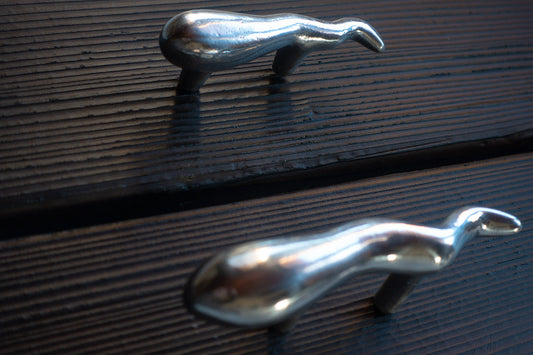Photography has always sat at an unusual intersection in the art world. It behaves like a reproducible medium, yet the works most valued by museums and collectors are those tied to processes that resist repetition. Understanding how photographs accumulate significance requires looking closely at the conditions of their making — material, procedural, and historical.
This article outlines the key criteria used by curators and serious collectors when assessing long-term value in analogue and contemporary photography.
1. Process Integrity: Why Method Shapes Future Importance
In painting, the medium declares itself instantly. In photography, the labour and craft are invisible unless one understands the process behind the image. For over a century, museum collecting has favoured artists whose technique is inseparable from the final work.
Consider:
Hiroshi Sugimoto — whose long-exposure works rely on the discipline of an 8×10 large-format camera and meticulous darkroom practice. MoMA’s holdings demonstrate how process and concept intertwine:
https://www.moma.org/artists/5721-hiroshi-sugimoto
Sally Mann — whose wet-plate collodion prints at the National Gallery of Art exemplify how material instability can become an aesthetic language in itself:
https://www.nga.gov/collection/artist-info.18213.html
Man Ray — whose cameraless rayographs at Tate Britain remain unrepeatable because they depend on physical interaction with light and chemistry:
https://www.tate.org.uk/art/artists/man-ray-1626
In each case, the print is not simply an image; it is an evidentiary document of a specific and irreversible making process.
Collectors who focus on process integrity tend to acquire works that hold — and grow — long-term cultural significance.
2. Rarity Defined by Conditions, Not Edition Numbers
Edition size alone rarely determines the value of a photograph.
Curators increasingly distinguish between two forms of rarity:
A. Rarity by Intention
Editioned works establish rarity through a deliberate limit set by the artist or studio.
This is the common structure used throughout the history of photography, from Ansel Adams to Cindy Sherman, and is fully recognised within museum collecting practices.
B. Rarity by Condition
Some works are rare because they cannot be repeated: the conditions of their creation — chemical, environmental, or procedural — are inherently unrepeatable.
This form of rarity is often associated with cameraless photography, wet-plate processes, and complex large-format or underwater methods.
Both forms of rarity hold value; they simply reflect different artistic strategies and market categories.
Two works that exemplify this principle are:

Ptolemy (Oil + Water series)

Dark Matter (Oil + Water series)
Both are unique chromogenic prints created under conditions that cannot be duplicated. Their status arises not from a declared edition but from the inherent impossibility of repeating the interplay of water, chemistry, particulate matter, and large-format exposure.
This distinction — rarity by process — is one of the most reliable indicators of future value.
3. Material Stability and the Museum Standard
Museums evaluate the longevity of photographic works through a set of highly consistent criteria:
- Negative or plate history — documentation of the original carrier.
- Print stability — archival characteristics of the paper and chemistry.
- Evidence of hand-printing — variations that affirm authenticity.
- Technical documentation — notes from the session or darkroom.
- Condition and handling — absence of abrasions, fading, or chemical shifts.
These principles guide acquisitions of photographers such as:
- Julia Margaret Cameron (Victoria & Albert Museum)
- László Moholy-Nagy (Art Institute of Chicago)
- Irving Penn (The Metropolitan Museum of Art)
The works that endure in institutional collections are those whose material history is verifiable and whose physical character is stable enough to survive for generations.
Underwater analogue photography naturally aligns with these criteria because the process creates physical artefacts whose exposure conditions are self-evident.
4. Why Process-Driven Works Appreciate Over Time
Throughout the history of the medium, the photographs that appreciate most reliably tend to share four characteristics:
- They are materially tied to their process.
- They are difficult or impossible to recreate.
- They demonstrate technical mastery.
- They possess a conceptual clarity aligned with their method.
This can be seen in:
- Moholy-Nagy’s photograms
- Sugimoto’s studies of time and light
- Weston’s silver gelatin prints
- Adam Fuss’s cameraless exposures
Underwater large-format work operates within this lineage. The images are not the result of digital manipulation but of sculpted physical conditions — an approach that strengthens their evidentiary and cultural value.
5. The Collector’s Role in the Arc of Value
Once a photograph enters a collection, its future significance depends partly on the collector’s care.
Curators routinely advise the following:
- Preserve all correspondence and proof of purchase.
- Retain artist’s statements, notes, and any process documentation.
- Frame using UV-protective glazing and museum-grade materials.
- Avoid strong light exposure and fluctuating humidity.
- Maintain clear documentation for future provenance transfers.
Collectors who follow these principles help ensure that the work maintains — and often increases — its cultural and financial value over decades.
Conclusion
The long-term value of a photograph arises from its material truth, its process, and the clarity of its documentation. Works built through slow, precise, and unrepeatable methods inevitably stand apart. For collectors seeking pieces that will deepen rather than diminish over time, understanding these principles is essential.




